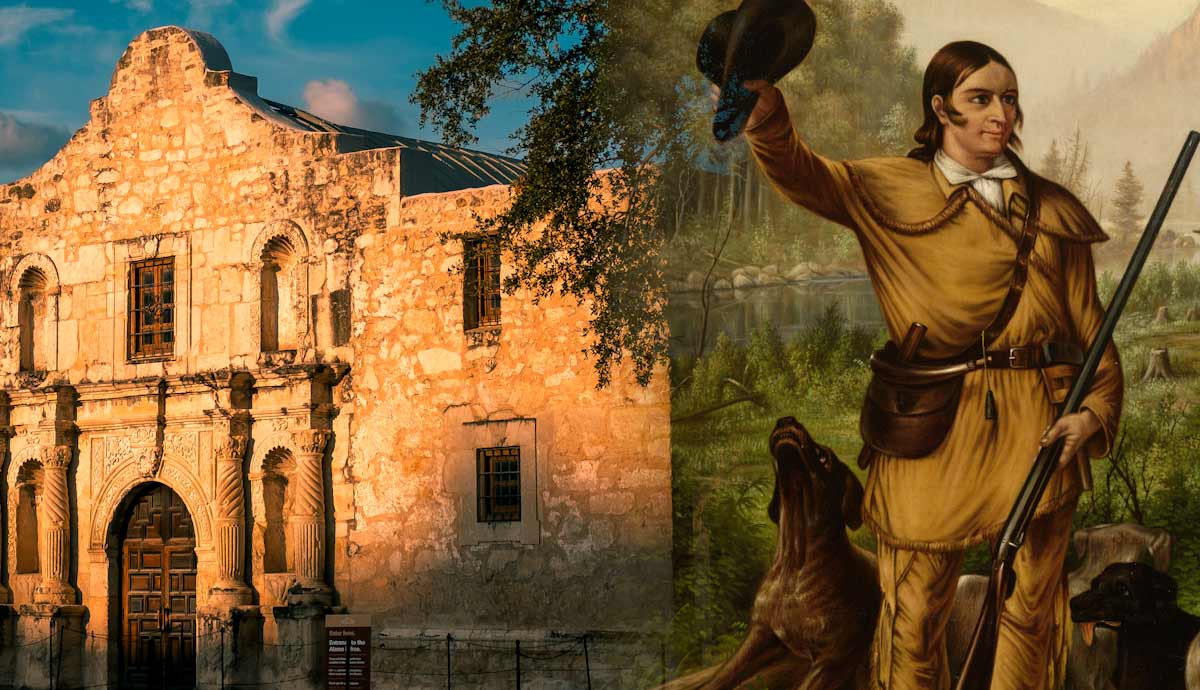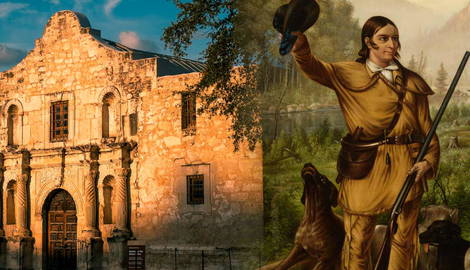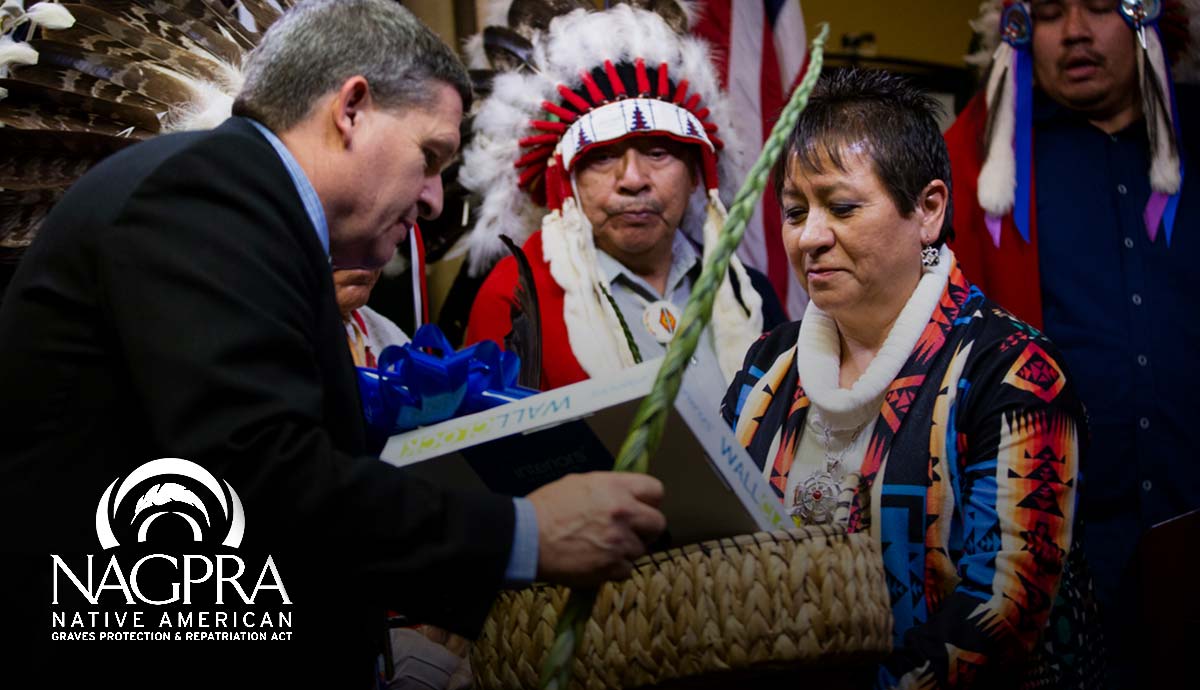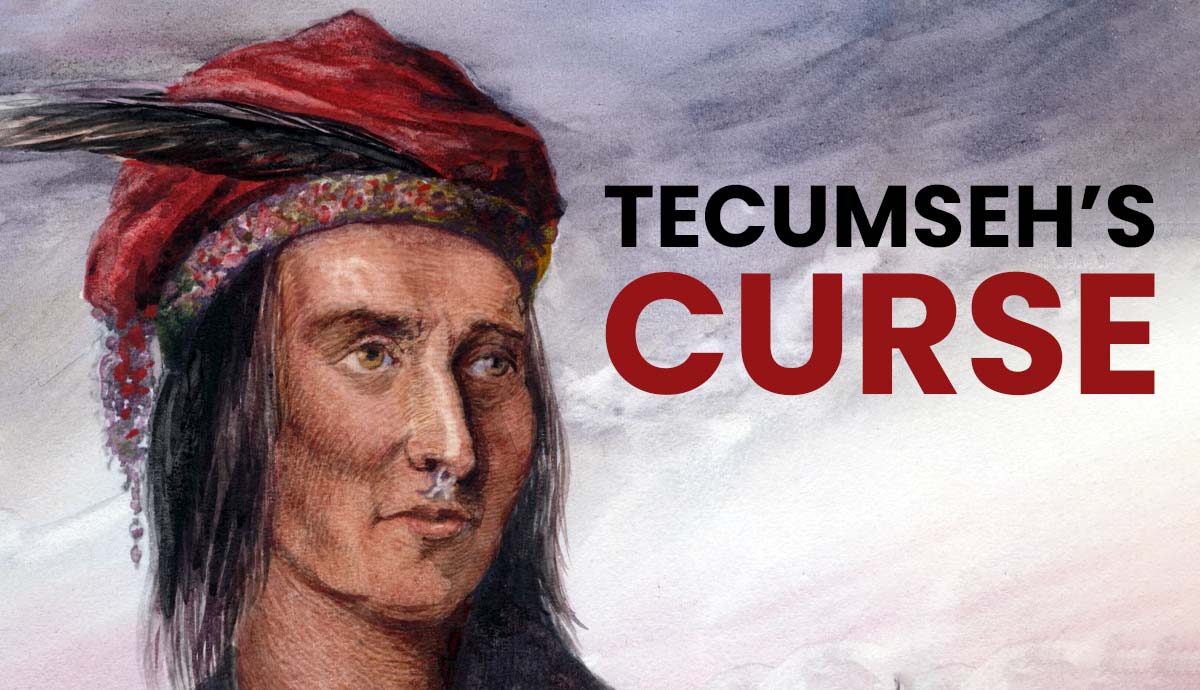
Davy Crockett was a frontiersman who lives on into the twenty-first century as a popular American folk hero. A Tennessean, he traveled the South and made his mark while serving his country as a soldier and legislator. He was a contradiction in many ways: He was both a rugged explorer and a respected politician, a US military hero, but also a killer of Native Americans. Still, Crockett has been idolized by generations of Americans, as he has been immortalized in media and beyond.
Backwoods Beginnings

The fifth of nine children, David Crockett was practically born with a rifle in his hand. His father, John, taught him to shoot by the time he was eight, and he eagerly tagged along with his older brothers on hunting trips. At thirteen, he enrolled in school at his father’s insistence, but his tenure as a scholar was short-lived. After only a few days, he got into a scrap with the school bully and, fearing vengeance, refused to return. He ended up running away from home and spent the next few years working as a woodsman in his native Tennessee. Just before age sixteen, he returned home and spent time working for other locals, hired out by his father.
Love Lost & Found

In 1805, when he was nineteen years old, Davy took out a marriage license to marry Margaret Elder. In what would prove to be a foreshadowing of his future love life, Davy’s luck soured, and Margaret refused to follow through with the marriage.
One year later, Davy successfully courted Mary Finley, who went by Polly. They were married on August 14, 1806, and lived on a small rented farm. After failing to find success on the farm, they moved west. Davy was a better hunter than he was a farmer. Near the Alabama border, deer and bear were abundant, whose meat would provide food for his family, which now included two sons, and whose skins were worth cash on the market. He became famous for his hunting prowess, allegedly killing 105 bears in one season.

Davy and Mary later welcomed a daughter, increasing their brood of children to three. Not long after their daughter Margaret’s birth in 1815, Mary fell ill and died, a loss that Davy called “the hardest trial which ever falls to the lot of man.” Though he mourned his wife, Davy felt it necessary to find a mother for his three small children. He soon became interested in local widow Elizabeth Patton, who had two children of her own. They were married before the end of the summer of 1815.
The War of 1812 & The Creek War

While the War of 1812 raged largely north of Crockett and on the water, some incidents would hit close to home. This included conflicts with the Creek tribe in the southeastern United States. In August 1813, members of the Creek tribe attacked Fort Mims, Alabama, and killed approximately 500 settlers. Crockett, along with most other young men in the region, was outraged and signed up to join the local militia immediately at the beckoning of General and future President Andrew Jackson.
Crockett’s service in the military was relatively undistinguished, though he did serve as a scout due to his unique talents. Crockett found that he had little stomach for warfare, though he demonstrated a willingness to follow orders. He participated in a revenge massacre on the Creek town of Tallushatchee, where more than two hundred Creek men, women, and children were killed.
Crockett later reflected on the massacre with a sense of regret, saying that he and his brethren had shot the Native Americans “like dogs.” Davy headed home as soon as his ninety-day enlistment was up, not staying to see the end of the War of 1812 and Jackson’s victory against the British at New Orleans. Though he would remain a militia lieutenant, Crocket would not bear arms in a military fashion again until 1836.
Crockett the Congressman

After the conclusion of his military service, Crockett decided to pursue politics. He began his career in public service as a magistrate, then became a justice of the peace, then a town official. Eventually, he ran for the state legislature, winning a seat in 1821 and 1823. A great deal of Crockett’s political focus lay on the West, its development, and the protection of people who lived there.
His good sense of humor and brutal honesty made Crockett very popular with his constituents and fellow politicians, and his legend began to grow. He never was able to escape his association with his backwoods roots, but it seemed to aid in his popularity.
Crockett would go on to run for the US House of Representatives as a supporter of Andrew Jackson, who was soon to become president. Eventually, his dedication to squatter’s rights and other aspects of western settlement led to a divide with Jackson’s party, which contributed to him losing his congressional seat in 1831, though he would be re-elected in the next congressional session.
Becoming a Legend

Campaigning for political office helped Crockett to inadvertently create his own legend. While he was skilled in rural handiwork, such as woodsman work and sharpshooting, the extent of his prowess was described in mammoth proportions in newspapers throughout the country. He was adept at spinning yarns, describing his adventures in epic detail to his compatriots in Congress and constituents alike. He became an author, narrating his past adventures and writing political novellas.
Writer James Kirke Paulding released an enormously successful play in April 1831 called The Lion of the West. Its protagonist and hero, Nimrod Wildfire, was very clearly a caricature of Crockett. Fans loved the play and its main character, which only boosted Crockett’s reputation.

After losing his seat in 1835, Crockett decided he was disenchanted with politics and was eager to explore again. He was reported as saying, “Since you have chosen a man with a timber toe to replace me [his winning opponent had a peg leg], you may all go to Hell and I shall go to Texas.”
He decided his next move would be to explore Texas and, if he found the environment suitable, move his family there. In November, he set out with three friends to see what the vast Texas country had to offer. Texas was not yet a US territory but soon to become a disputed region when it declared independence from Mexico in 1836.
Trouble in Texas

When Crockett arrived in Texas, he found the place in turmoil. He had no intention of getting involved in Texas’ struggle for independence but soon found himself caught up in the fight. He soon signed an oath of allegiance to the newly-formed republican government of Texas that planned to fight for independence from Mexico.
Davy found that the political splits in Texas were very similar to the ones he had left at home, with supporters of Jacksonian politics opposing those who believed in the Whig philosophy, the party the Crockett himself had been affiliated with later in his political career. He was eager to re-align with his old party, which made it more enticing to join the fight. Crockett joined the army and led a small group called the Tennessee Mounted Volunteers to the Alamo, a former Franciscan mission-turned-fort in San Antonio. Letters home to his family reflect that Crockett did not expect a fight, but he would soon be proven wrong.

At the Alamo, Crockett joined Lieutenant Colonel William Travis along with fabled mountain man-turned-military Colonel Jim Bowie to create a trifecta of legendary leaders. Crockett was not the only one who did not expect the Mexican army’s immediate arrival, so when news of General Antonio Lopez de Santa Anna’s impending attack came, the group of under 200 men inside the Alamo scurried to prepare for the onslaught.
Though Crockett had limited war experience, due to his widely overblown legend, Travis assigned him to one of the toughest positions from which to defend the Alamo. Crockett took it in stride, even as enemy numbers grew into the thousands and promised Texas reinforcements failed to arrive. He was said to maintain a positive demeanor and encourage his fellow soldiers.
After holding off the Mexicans for a remarkable 13 days, the Texans were finally overcome on March 6, 1836. Prisoners were shown no quarter, and though accounts of the specific events vary, Crockett was said to have met his end “without complaining.”
Media Portrayal & Modern Considerations

His death fighting for Texas independence would only add to the legend of Davy Crockett. Though he had passed on, his legend would spring forth with new life after his death. An unknown author began publishing annual Davy Crockett Almanacs, books that told stories about life in backwoods America from Crockett’s point of view, with a lot of artistic license. The main character was often bawdy, racist, and superhuman, fighting alligators, riding comets, and wrestling bears. These books were incredibly popular and helped paint the portrait of a mythical figure, an American Hercules in a coonskin cap. Though his popularity would decrease somewhat after the Civil War, Crockett remained a popular character in boys’ adventure books and a fixture in early Hollywood.

Television shows and movies made Davy Crockett not just a figment of the American imagination but brought his character to life in front of their eyes. Americans underwent a Crockett craze in the 1950s and 60s, with superstars John Wayne and Fess Parker playing Crockett on the big screen and coonskin caps (though popular among frontiersmen, there is no definitive proof Crockett ever wore one) in high demand.

Looking back on Crockett now, The US public now grapples with sorting fact from fiction, as new information about the historical events Crockett was a part of has come to light over the years. One particular example is the treatment of Native Americans by the United States government and army, an effort that, although Crockett was eventually disillusioned with, he was still a participant in.

“Davy, Davy Crockett, king of the wild frontier” echoes in the refrain of the theme for the Disney film starring Fess Parker, popular in the 1950s. These words perhaps best summarize how the world remembers Davy Crockett and his achievements. Though a closer examination proves there is much more to the Crockett story, his life certainly left a legacy of intrigue and painted a portrait of an early American hero who has been idolized for generations.










